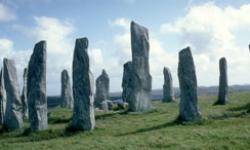


Tall buildings become suburbs become open stretches of water and land. Read about the measures we took to keep our 2021 small group guided tours safe here.īegin your journey along The West Highland Line. Early booking is strongly advised as places are strictly limited.ĭo not hesitate to let us know if we can assist with tailor-made arrangements for you pre or post this scheduled tour. With a maximum of 14 passengers per group, you can be sure of highly personal service from your knowledgeable, local tour leader on this exclusive McKinlay Kidd small group rail tour. Spend time in St Columba’s island then ride The Jacobite steam train by coast and through mountain.Įxperience a week built on moments of fascination and drama – Scotland’s Highlands & Islands the stage for this epic journey. Wander through the garden grown by ocean heat and stand upon the rock that bound a ruler to the land.

In the company of a local guide, take the path of the first pilgrims, visit the resting place of 60 monarchs and uncover a Scottish Kingdom founded by pirates. This week-long small group rail tour will stay with you for a lifetime. Discover the hidden treasures of Kilmartin Glen & Dalriada.

Visit the unique islands of Staffa and Iona. The mountainous mass of the island, divided by the valley between Douglas and Peel, remained almost uninhabited throughout prehistoric and historic times.Journey by train on the West Highland Line. Most of the area of older rocks lies above the 400 foot contour and quite large areas are more than 1000 feet above sea level. The interaction of British and Irish influences and the occasional insular developments are the chief features of the prehistory of the island.Īpart from a triangle of flat ground to the north, broken only by the Bride Hills (200–300 feet), and so far as its drift deposits are concerned, relatively recent in origin, the island consists almost entirely of slate diversified by local intrusions of igneous rocks (granite and diabase), by the sandstone of the Peel area, and by the carboniferous limestone of the Castletown district in the south. miles) and the distance of sea which isolates it from the coasts of the mainlands have been sufficient to ensure vigorous local developments. Since the first settlement of the island, cultural and ethnic influences have approached from all directions, but its size (227 sq. An observer on Snaefell (2034 feet) can view England, Scotland, Ireland and Wales in one sweep. 1) at an equal distance (31 miles) between the coasts of Ireland and of Cumberland its northern tip, the Point of Ayre, reaches to within 16 miles of Wigtonshire, and Anglesey lies 45 miles to the south of Langness Point. The prehistory no less than the geology of the Isle of Man is of absorbing interest from its geographical position in relation to the larger units of the British Isles. ‘Rising from the middle of the Irish Sea, within sight of each of the three Kingdoms, with a history and associations so distinct, yet so intimately linked with those of the rest of Britain, this interesting Island presents in its geological structure features which connect it alike with England, Scotland, and Ireland, while at the same time it retains a marked individuality in regard to some of the rocks that form its framework.’- Sir Archibald Geikie.


 0 kommentar(er)
0 kommentar(er)
